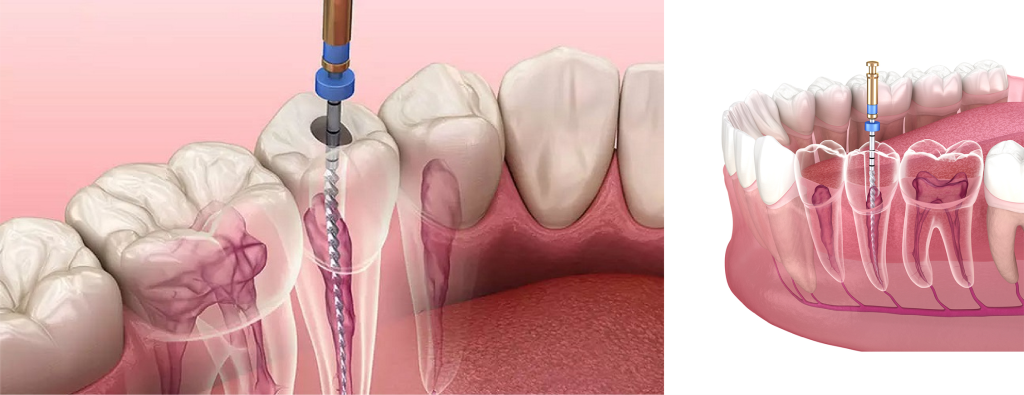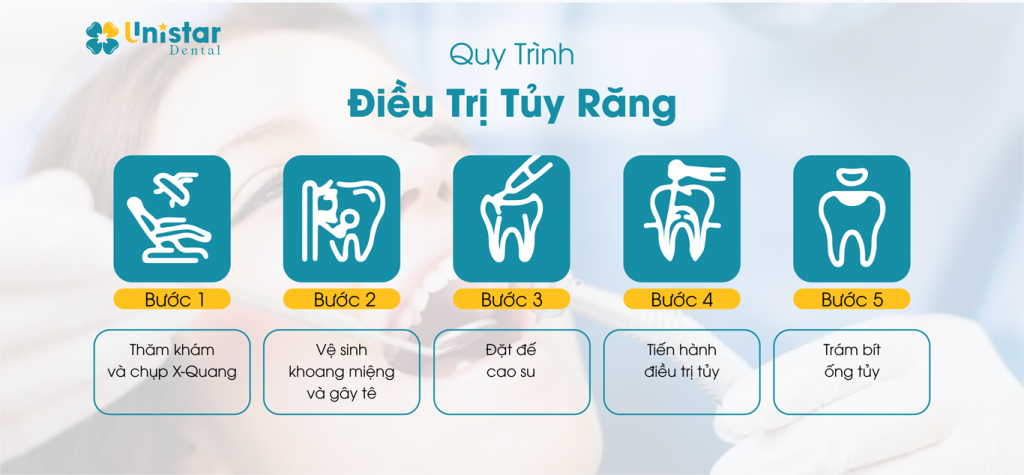
Tooth Filling – Root Canal
TOOTH FILLING – ROOT CANAL TREATMENT?
Root canal treatment is a method of restoring teeth and protecting real teeth. The tooth filling and root canal treatment process requires the use of high technology combined with modern tools and equipment so that the treatment process takes place safely and smoothly.

Tooth filling – Root canal treatment?
See more: Dentures at Unistar Dental
WHEN DO YOU NEED TOOTH FILLING AND ROOT CANAL TREATMENT?

1. In case of tooth filling without root canal
For cases where tooth decay does not affect the pulp or broken teeth do not expose the pulp. The entire tooth filling process is performed directly without needing root canal treatment.
2. In case of tooth filling and root canal
Severe tooth decay causes a lot of pain when chewing and sensitivity to hot and cold foods. Teeth with dead pulp or damaged or broken teeth will expose the pulp and pose a risk of infec-tion. These are all cases where root canal treatment is required before tooth filling.
Advantages and Disadvantages of tooth filling and root canal treatment

1. Advantages of root canal obturation
Preserving real teeth: Dental filling material acts as a membrane to help protect real teeth opti-mally. Not only that, after root canal treatment, customers will no longer feel pain. Root canal treatment is essential to minimize infection, tooth abscess and the risk of tooth loss.
Improve chewing function: Dental fillings will help reshape teeth. Helps real teeth become stronger and eliminates pain. Thanks to that, the ability to eat and chew will be restored well, contributing to improving overall health.
2. Disadvantages of root canal obturation
Because dental pulp is the source of nutrition for teeth, after pulp treatment and restoration, tooth tissue will still be more susceptible to fracture than normal teeth.
DENTAL FILLING AND ROOT CANAL TREATMENT PROCESS

Step 1: General examination and X-ray
The doctor will check the patient’s general health for chronic diseases such as diabetes, heart disease, blood clotting, blood pressure, etc. Are not? If the patient’s health is stable and eligible for root canal treatment, X-rays will be performed.
X-ray results will reveal the condition and extent of pulp inflammation. At the same time, deter-mine the length of the root canal and plan treatment.
Step 2: Clean the oral cavity and anesthetize
The doctor cleans the oral cavity, removes bacteria and agents that are at risk of causing tooth infection during the root canal procedure.
Then, the doctor will perform regional and local anesthesia.
Step 3: Place the rubber base
The rubber base is placed tightly on the patient’s tooth to prevent dead pulp treatment chemi-cals from entering the digestive tract. At the same time, it prevents saliva containing bacteria from entering the wound.
Step 4: Conduct root canal treatment
The doctor will make an incision on the tooth surface to reach the root canal and suck out the dead pulp.
Step 5: Fill the root canal
After removing all the dead pulp, the doctor will shape the root canal and fill the empty pulp cavity with Gutta Percha material.



 Tiếng Việt
Tiếng Việt






